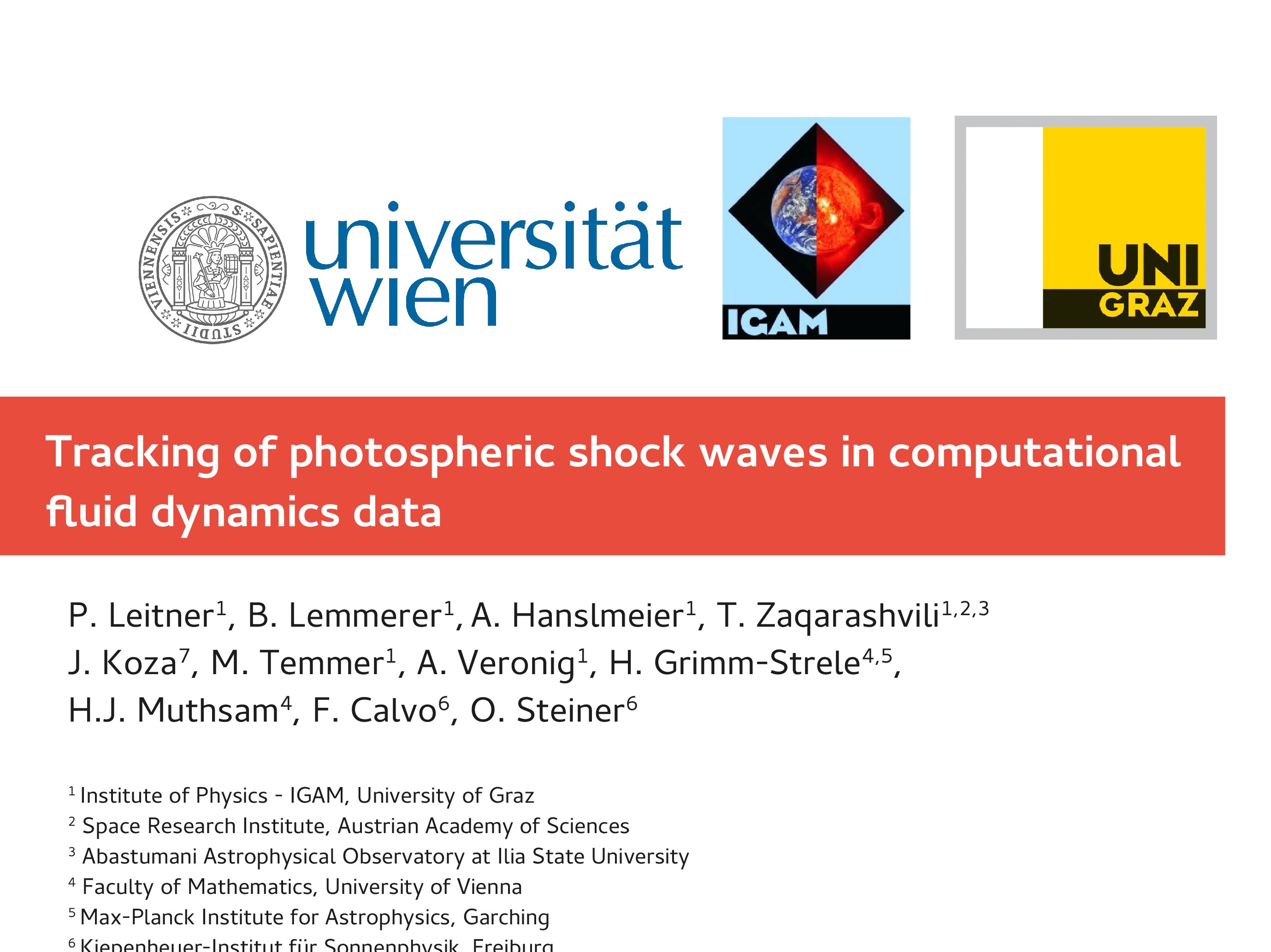Affiliation
Institute of Physics, University of Graz
Main category
Natural Sciences (Physics)
Abstract
Simulations of the solar convection including radiation transport allow us to examine and track photospheric shock waves in detail unparalleled by direct observation. It is still not clear which processes trigger shocks and how significant a role they play for the energy transport to the upper layers of the atmosphere. Apart from traditional techniques of shock wave detection that rely on a search for the concentration of contour lines of pressure, density, and temperature and for the localization of Mach number isosurfaces, we employ recent post-processing methods specifically aimed at the analysis of computational fluid dynamics (CFD) data that allow us to more accurately locate and segment shock fronts as they propagate through the photospheric plasma. We present an application of different detection algorithms on radiation hydrodynamics (RHD) and radiation magnetohydrodynamics (RMHD) simulation data of the photosphere that are based on an edge detection technique as well as a method to locate shock surface normals based on the local pressure gradient. We will compare the emergence of shock patterns in these two qualitatively different simulations and discuss the correlation of the shock structures with the underlying flow field.
Do you have problems viewing the pdf-file? Download presentation
here
If the presentation contains inappropriate content, please
report the presentation. You will be redirected to the landing page.
